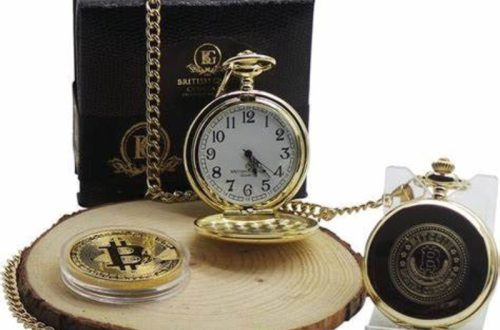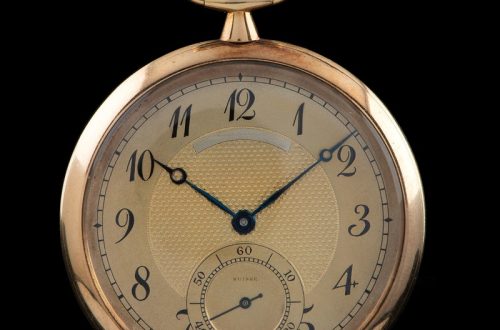History of Mechanical Watch Movements
The journey of mechanical watch movements is a fascinating tale. It dates back to the 14th century. The first portable timepieces were heavy and worn around the neck or waist. By the 16th century, miniaturization allowed watches to fit in pockets. The invention of the mainspring was crucial. It gave birth to the era of mobile timekeeping.
In the 17th century, innovations soared. The balance wheel and hairspring came about. They enhanced accuracy significantly. The 18th and 19th centuries saw further refinements. The escapement mechanism, and jeweled bearings were introduced. They reduced friction and wear in the movement.
The 20th century brought the wristwatch. Timekeeping became more accessible and stylish. The wristwatch was a hit with both soldiers in the trenches and civilians. Automatic or self-winding movements gained popularity in the mid-20th century. They harnessed the power of natural wrist movements to wind themselves.
Throughout history, the quest for precision has driven innovation in watch movements. Craftsmen and engineers have crafted intricate parts to create precise and reliable devices. The mechanical watch movement diagram is a testament to this legacy. It shows the complexity and craftsmanship of these tiny engines of time.
Components of a Mechanical Watch Movement
Understanding the intricacies of a mechanical watch movement can be daunting. Yet, grasping the basic components is key to appreciating these marvels of craftsmanship. Let’s break down the elements of a mechanical watch movement diagram, piece by piece.
The Energy Source: Mainspring and Barrel
The mainspring and barrel are the heart of a mechanical watch. They store energy when the watch is wound. This energy keeps the watch ticking. The mainspring is a coiled wire. It releases energy slowly as it unwinds. The barrel houses the mainspring and allows this gradual energy release.
The Oscillator: Balance Wheel and Hairspring
The balance wheel and hairspring work together to ‘oscillate’. This controls the flow of time. The balance wheel swings back and forth at a steady pace. The hairspring coils and uncoils as the balance wheel moves. This duo ensures the watch keeps time with precision.
The Regulator and Escapement Mechanism
The escapement transfers energy to the balance wheel. It also counts its oscillations. The regulator adjusts the watch’s timing. It can make the watch run faster or slower. This component is crucial for accurate timekeeping.
The Gear Train: Wheels and Pinions
Wheels and pinions form the gear train. They transmit energy from the barrel to the escapement. The gears also drive the hands on the watch’s face. They govern the speed at which the hands move.
The Indicating Dial: Hands and Markers
This is the face of the watch. It includes hands and markers that display time. They move across the dial to show hours, minutes, and sometimes seconds. The hands and markers take the precise movement from within and make it visible on the outside.
Types of Mechanical Movements
Mechanical watch movements are not all crafted the same. There are primarily two types recognized today: manual-winding movements and automatic or self-winding movements. Each has its own advantages and characteristics that appeal to different watch enthusiasts.
Manual-Winding Movements
Manual-winding movements require the wearer to wind the watch by hand to keep it running. This is the oldest type of mechanical watch movement. It has a simplicity that is both their strength and their charm. Connoisseurs often appreciate the ritual of winding their watch. It creates a deeper connection between the timepiece and its owner. The absence of additional mechanisms also makes for a slimmer profile, allowing these watches to be more lightweight and often more affordable.
Automatic or Self-Winding Movements
Automatic movements, also known as self-winding, are a step up in convenience. They harness the natural motion of the wearer’s wrist to wind the watch automatically. A rotor, typically visible through the back of the watch, swings in response to movement, thereby winding the mainspring. This innovation eliminates the need for daily hand winding. Automatic watches are preferred by those who appreciate the blend of traditional craftsmanship with the ease of modern technology. However, they may be slightly thicker due to the added automatic mechanism.
Both manual and automatic movements showcase the intricate beauty and precision engineering that define mechanical watches. When we look at a mechanical watch movement diagram, we witness the harmony of these components working together to keep accurate time.
Understanding the Watch Movement Diagram
A mechanical watch movement diagram is a map of a watch’s heart. It shows each part and how they fit together. Let’s explore how to read this diagram for a better grasp of mechanical timepieces.
Identifying Components
Start by looking for the mainspring and barrel. These parts store and release energy. Next, find the gear train. It includes small wheels and pinions. These parts pass energy to the hands of the watch. Locate the balance wheel and hairspring. They oscillate to measure time. Look for the escapement. It regulates the balance wheel’s motion.
Understanding the Energy Flow
Trace the path from the mainspring. It moves through the gears and ends at the escapement. Each transfer of energy is precise. It keeps the watch moving accurately. Visualizing this flow helps you see how the watch keeps time.
Viewing the Interaction
Notice how the parts work together. The balance wheel and hairspring create a steady rhythm. The escapement ensures this rhythm drives the hands. The gears connect all these actions. Together, they maintain the watch’s time.
By understanding the mechanical watch movement diagram, you appreciate the watch’s craftsmanship. Each tiny part has a big role in timekeeping. It’s a dance of precision parts, all in the space of your wrist.
Importance of Jewels in Watch Movements
Jewels play a critical role in mechanical watch movements. Their primary function is to reduce friction. As watch gears turn, they encounter resistance. Without jewels, wear and tear would be rapid. This would decrease the watch’s lifespan and accuracy.
Jewels, often made of synthetic ruby or sapphire, are hard and smooth. They offer a durable surface for metal parts to glide over. Their presence is essential for high-precision timekeeping. They help maintain the accuracy of the watch over the years. Watchmakers strategically place these jewels at high-friction points. These include the pivot points of gears and the escape lever.
One might wonder about the number of jewels in a watch. This count indicates complexity and perhaps quality. More jewels mean more pivot points are protected. A typical mechanical watch may have anywhere from 15 to 30 jewels. However, more jewels do not always mean a better watch. The design, as well as the quality of the jewels and their placement, are key.
Jewels also add an aesthetic value. Transparent case-backs showcase the beauty of these gleaming components. They entice watch aficionados who value the artistry of their timepieces. In mechanical watch movement diagrams, jewels are marked distinctly. This illustrates their importance in the movement.
To sum up, jewels are indispensable in mechanical watches. They ensure longevity and precision. When examining a mechanical watch movement diagram, one can appreciate how jewels contribute to the seamless function of the timepiece.
Maintenance and Servicing of Mechanical Watches
Owning a mechanical watch is much like owning a classic car. It requires regular maintenance to perform at its best. Even the most high-end mechanical watches need servicing to ensure longevity and accuracy. Here are the key aspects of maintaining your mechanical timepiece.
Regular Cleaning
Dirt and dust can infiltrate your watch, causing wear and tear on its intricate components. It’s vital to clean the exterior regularly with a soft, dry cloth. For the interior, professional cleaning every few years is necessary to keep the movement in top condition.
Proper Winding
For manual-winding watches, develop a routine. Wind it at the same time each day, without overwinding. Automatic watches benefit from being worn regularly. If not, consider a watch winder to keep it running when not in use.
Avoiding Extreme Conditions
Keep your watch away from extreme temperatures and magnetic fields. These can affect the watch’s movement and accuracy.
Timely Servicing
Mechanical watches should be serviced every 4 to 5 years. During servicing, a skilled technician will dismantle the movement, clean each part, and replace worn elements, such as the mainspring and gaskets.
Water Resistance Checks
If your watch claims water resistance, have it tested periodically. Gaskets can degrade over time, compromising the seal.
By following these maintenance tips, and consulting the mechanical watch movement diagram for understanding, you help ensure that your watch stays accurate and reliable for many years to come.
Innovations and Advancements in Mechanical Movements
The evolution of mechanical watch movements reflects an ongoing commitment to innovation. Advances in materials and technology have led to more precise and durable timepieces. In recent years, these advancements have taken the form of high-tech materials, improved energy efficiency, and novel mechanical solutions.
High-Tech Materials
Watchmakers have turned to new materials to enhance movements. Silicon parts now replace metal in some watches. This reduces friction and the need for lubrication. As a result, timekeeping becomes more accurate, and watches require less maintenance.
Improved Energy Efficiency
Engineers have refined the mainspring and escapement mechanisms to store and release energy better. New alloys for springs improve their lifespan and consistency. Escapement designs now achieve more with less energy. This boosts the watch’s power reserve, allowing it to run longer without winding.
Novel Mechanical Solutions
Inventiveness reigns in watch movement design. Some watches now feature tourbillons or constant force mechanisms. These aim to counter the effects of gravity on accuracy. Others include complications like perpetual calendars and minute repeaters. These not only track time but also add functionality and complexity.
The mechanical watch movement diagram of today looks very different from its historical counterparts. Each component is a culmination of centuries of learning and months of meticulous crafting. As we peek into the future, we can be sure that the mechanical watch will continue to be an icon of ingenuity and elegance.





